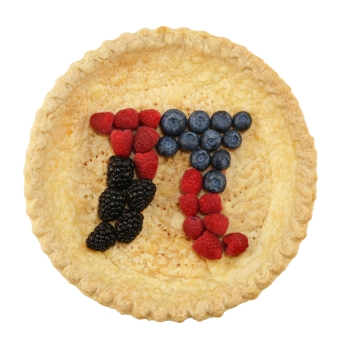 Teachers, architects and engineers have found the mathematical constant, π, to be an invaluable tool for understanding and changing the world around us. Without Π, we would not be able to quickly calculate the area of a circle. To celebrate Pi Day (March 14th), today’s mental exercise will be to test your knowledge of Π. Are you ready for more Π?
Teachers, architects and engineers have found the mathematical constant, π, to be an invaluable tool for understanding and changing the world around us. Without Π, we would not be able to quickly calculate the area of a circle. To celebrate Pi Day (March 14th), today’s mental exercise will be to test your knowledge of Π. Are you ready for more Π?
1) What does Π represent?
a) The ratio of the circumference of a circle to its diameter
b) A rounded value of 3.14
c) The 16th letter in the Greek alphabet
d) All of the above
2) Who was the first person to calculate π?
a) No one really knows
b) Pythagoras of Samos (569–475 BC)
c) Euclid of Alexandria (323–283 BC)
d) Archimedes of Syracuse (287–212 BC)
3) Who was the first person to use the symbol π in an equation?
a) Pythagoras of Samos (569–475 BC)
b) William Jones, Wales (1675–1749)
c) Tsu Ch’ung-chih, China (429-500)
d) Richard Feynman, United States (1918–1988)
4) To how many decimal points has π been calculated?
a) 3 million
b) 5 trillion
c) 23 billion
d) 82 million
5) Lu Chao of China holds the world record for most digits memorized for π after the decimal point. How many digits was he able to recall in 2005 without any errors?
a) 9,845
b) 1,256
c) 67,890
d) 103,224
6) How many decimal places of π are sufficient for calculating the circumference of a circle surrounding the known universe to within the radius of a hydrogen atom (now that’s precise)?
a) 100,449 decimal places
b) 3,300 decimal places
c) 12 decimal places
d) 39 decimal places
7) Why is π so mysterious?
a) It contains an infinite string of numbers with nonrepeating patterns (…so far).
b) It is a transcendental number—it can’t be the root of a polynomial (e.g., x = a / b is the root of bx – a).
c) It is an irrational number—it can’t be represented as the ratio of two whole numbers (e.g., m/n).
d) In English π sounds like pie, which is nothing more than a circle whose area is filled with delicious ingredients.
e) All of the above.
Bonus Question: What is the equation for calculating the area of a circle?
So now that you have regained a new appreciation for π, go out and have some. For those outside the United States, you’ll have to wait until July 22 or 22/7 since that’s the closest approximation you’ll get for a Pi Day. But don’t worry—you can still enjoy Pi Day today with a little music video called “What Pi Sounds Like”.
Further Reading
Petr Beckman (1989) The History of Pi, Sterling Publishing.
David Blatner (1997) The Joy of Pi, Walker & Company.
Answers: 1)d, 2)a, 3)b, 4)b, 5)c, 6)d, 7)e, Bonus: A = πr2
Maria Perr
Latest posts by Maria Perr (see all)
- Insight into DICER1 Revealed in Macular Degeneration Research - July 18, 2011
- Pop Pi Quiz - March 14, 2011
- Writing Your Worries Away - February 18, 2011
